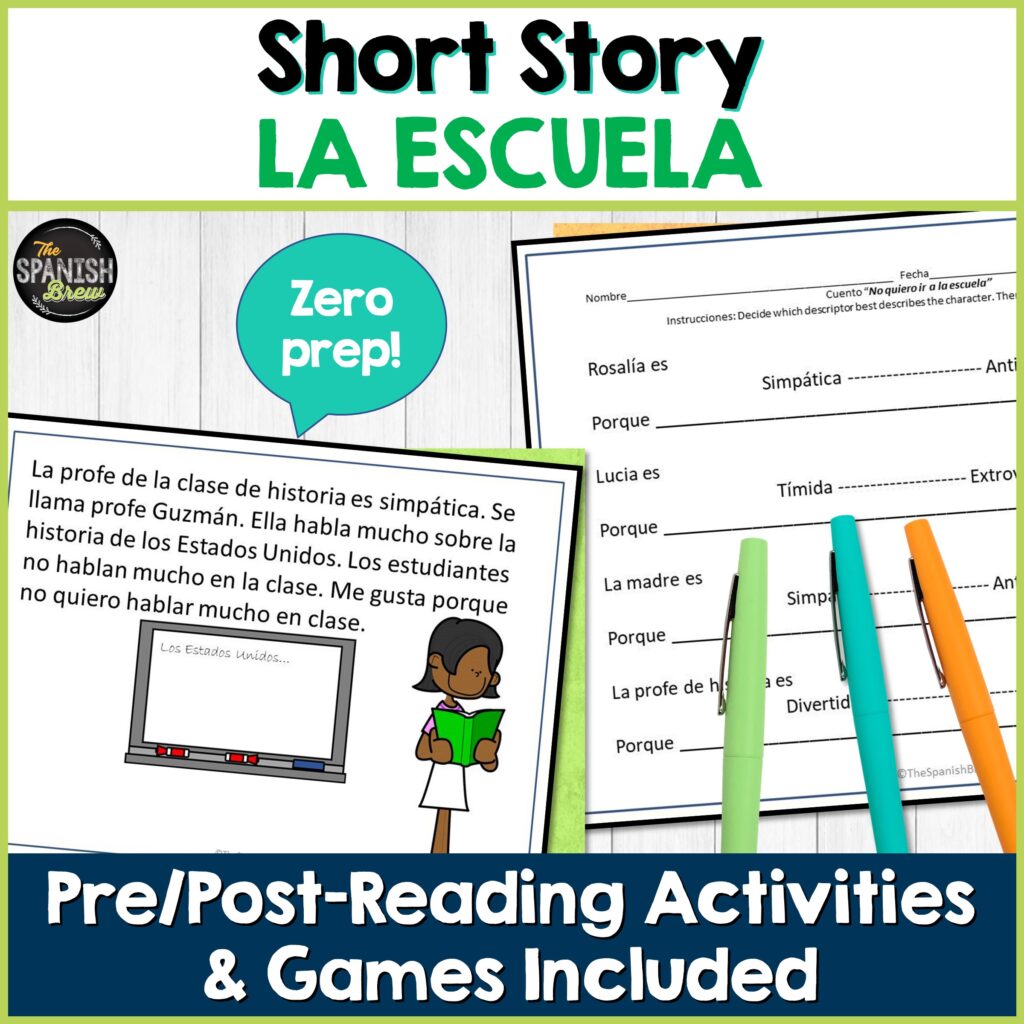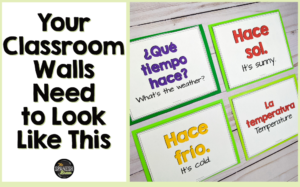
I absolutely LOVE using short stories in my classroom to increase Spanish input in context. For a long time I struggled with how to expose my students to grammar and vocabulary in context in a way that was engaging. Vocab lists and conjugation charts alone just weren’t doing it. My students could memorize them for an assessment, but then a few weeks later it was gone. So frustrating!
Once I started using short stories with my students I found that the repetition they got was helping the language to “stick.” Their retention was so much better. They could use the vocabulary in conjunction with high frequency verbs (like gusta, quiere, dice) in a meaningful way. Their ability to communicate improved. Finally! Plus, we were having fun. Want to check out one of my favorite stories about the first day at a new school? Read on if you’re curious how I teach these stories step by step and download my favorite story.
Prereading activities:
Giving them an overall idea of what the story will be about is fundamental to increase comprehension and decrease apprehension about seeing so much Spanish at once. I use a prediction activity with the key words from the story. Additionally, students get exposure to the key words by using interpersonal speaking task cards. This also helps to make it personal.
Story time!
I encourage my students to get comfy. They can sit at their desks or on the floor at the front of the room. We read the story together, pausing to ask questions, check for comprehension, and circle key ideas. When I stop to ask questions I expect the entire class to respond. I also use gestures to help them to understand new words.
Post reading activities
This is where you can really check for comprehension and also give them additional repetition. First, I keep it simple by asking true false questions about the story. You can ask in English or Spanish depending on your student’s language level. Then students will make inferences about the characters to build literacy skills. For example, they determine if the character is shy or outgoing and then provide an explanation why using examples from the text. Finally, they can make predictions about what they think will happen next.
The brilliance about using stories in class is that there are so many different ways to use the text to give additional input and repetition to build your students’ language skills. Plus, this allows you to extend the activity over multiple classes making your lesson planning a cinch. Ready to try it out? I’m happy to share this awesome story with you! Just enter your email and first name below. Your students will be able to relate to the experience of starting at a new school.
I’d love to hear about your experiences teaching with short stories. Drop me a line on Instagram or Facebook and tell me about your experience.




No Comments